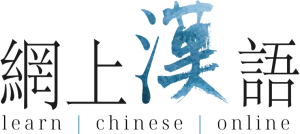Methodology
The additional texts allow you to learn more Mandarin Chinese by discovering new expressions without having to learn new characters.
Intentionally written in authentic Chinese, they go beyond the text / dialogue of a lesson which illustrates the content of it.
Warning !
In these additional texts, you will be confronted with phrases that do not respect the rules of grammar that you have learned. We must keep in mind that Mandarin Chinese, unlike our Western languages, is not based on syntax rules on which we can build speech, but on the practice of the language which forms the "use". Traditionally, ancient Chinese had no grammar. Classical texts were learned by heart in order to create a feeling of language. Modern classical Chinese learning methods , even if they have been able to introduce analyses of the phenomena of the language, recognise the need for the practice of the text which should ideally be memorising its content (see the reference for learning classical Chinese: 古代漢語 from 王力. This also happens in modern Chinese. Some expressions would seem confusing to you. An advanced student of Chinese can "feel" the difference between different but very similar phrases, even some of which seem to distort the grammar. In the analysis of the texts, I try at best to make these phrases explicit, but only the intensive practice of texts can make you acquire this sense of "good use" of the Chinese language.
Here are my methodological tips for making the best use of these additional Chinese texts:
First step: train listening, then reading
- Before reading the text in Chinese characters and the translation, first listen to the audio recording several times, trying to gather as much information as possible.
- Then read the text in Chinese characters several times without looking at the English translation. Try to find the meaning of unfamiliar words and expressions from what you know about the Chinese characters.
- Finally, compare the translation with the Chinese text. Some expressions must still seem difficult or even incomprehensible to you. You must then go to the next step: "Analysis of text".
Second step: study the text
- Study the text and pay great attention to the explanations. Write down words and phrases that are new to you. Make a list in English and find the words / expressions in Chinese characters orally and then in writing (Chinese characters).
- When you have mastered the new spoken and written vocabulary from English to Chinese, it is good to come back to the text to train the listening again: listen to the text as many times as necessary to understand it without error.
- Same principle for writing: you must read the text, aloud ideally, understanding it without a hitch.
Third step: train writing and speaking
Train the expression is the most difficult. You have to be able to translate the text from English to Chinese, in characters, not in Pinyin!
It is difficult to translate the entire text on the first try. It is preferable to proceed sentence by sentence following this diagram:
- you learn the first sentence and when you can translate it without error you move on to the second one
- before learning the third sentence, translate the first and second sentences
- then you go to the third
- when the third is mastered, you write the first, the second and the third sentences
- when you are able to write the first three sentences without error, you move on to the fourth
- etc.
Finally, we do the same exercise, but orally. Since you are fluent with the writing, it is very likely that you will be able to do the entire text orally the first time.
These different exercises allow you to better assimilate the Chinese language and its particular expressions. Of course, these are just tips. You are free to study as you see fit. But this learning pattern has been proven successful and if you are not sure how to go about it, I strongly encourage you to follow it.
